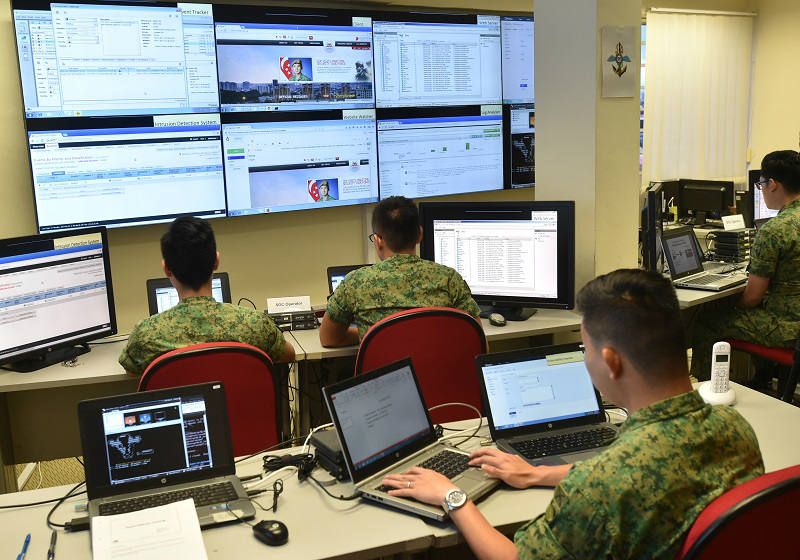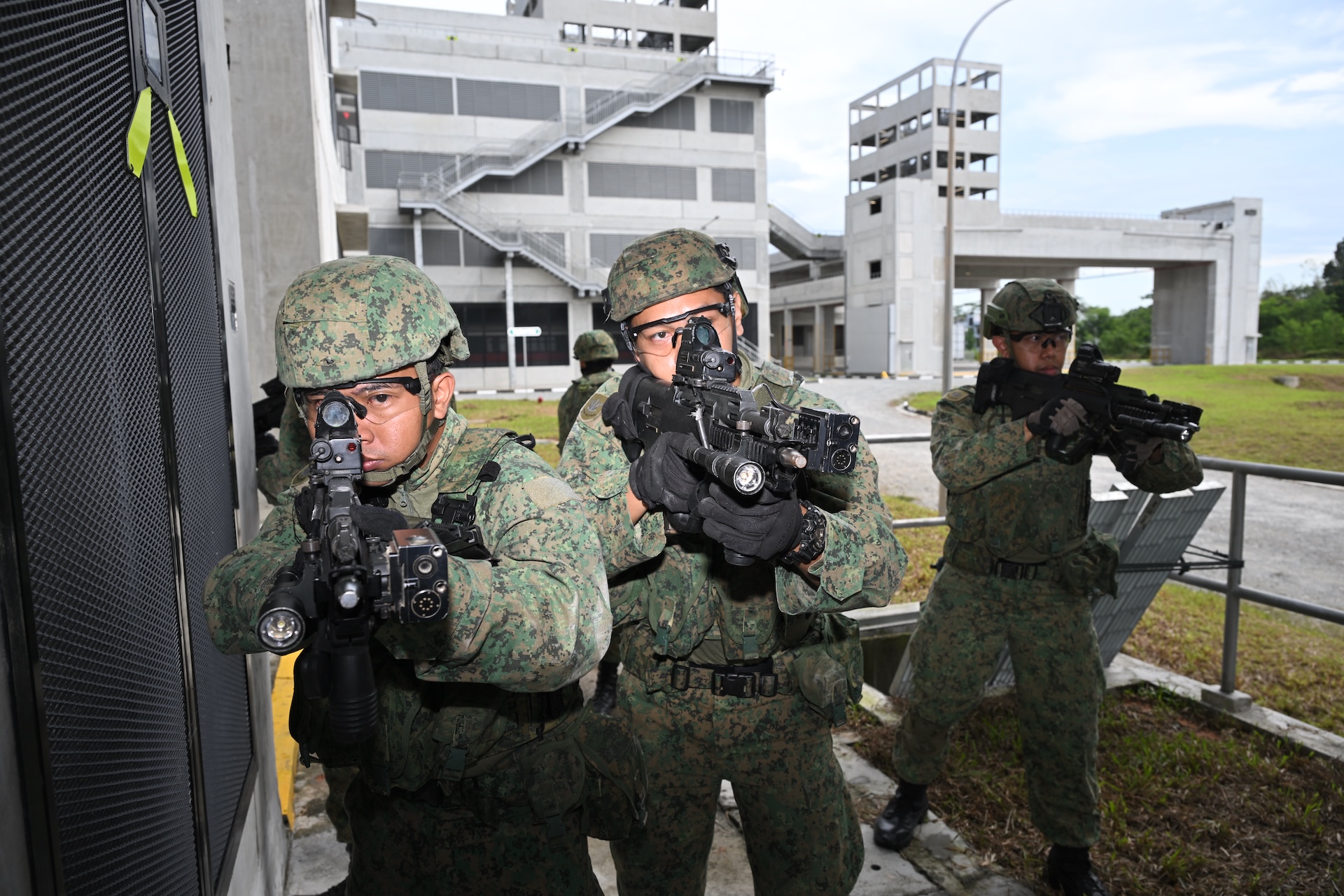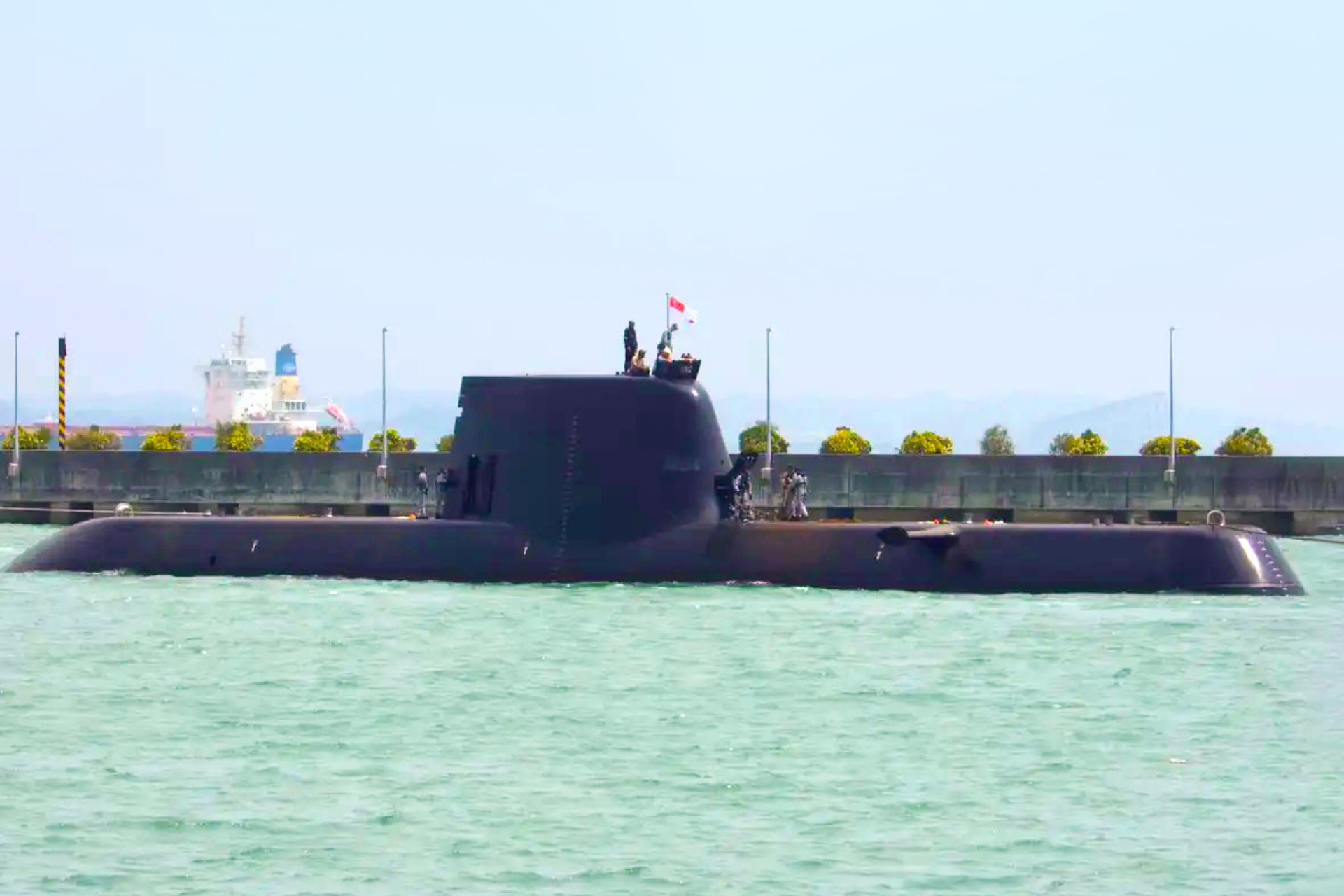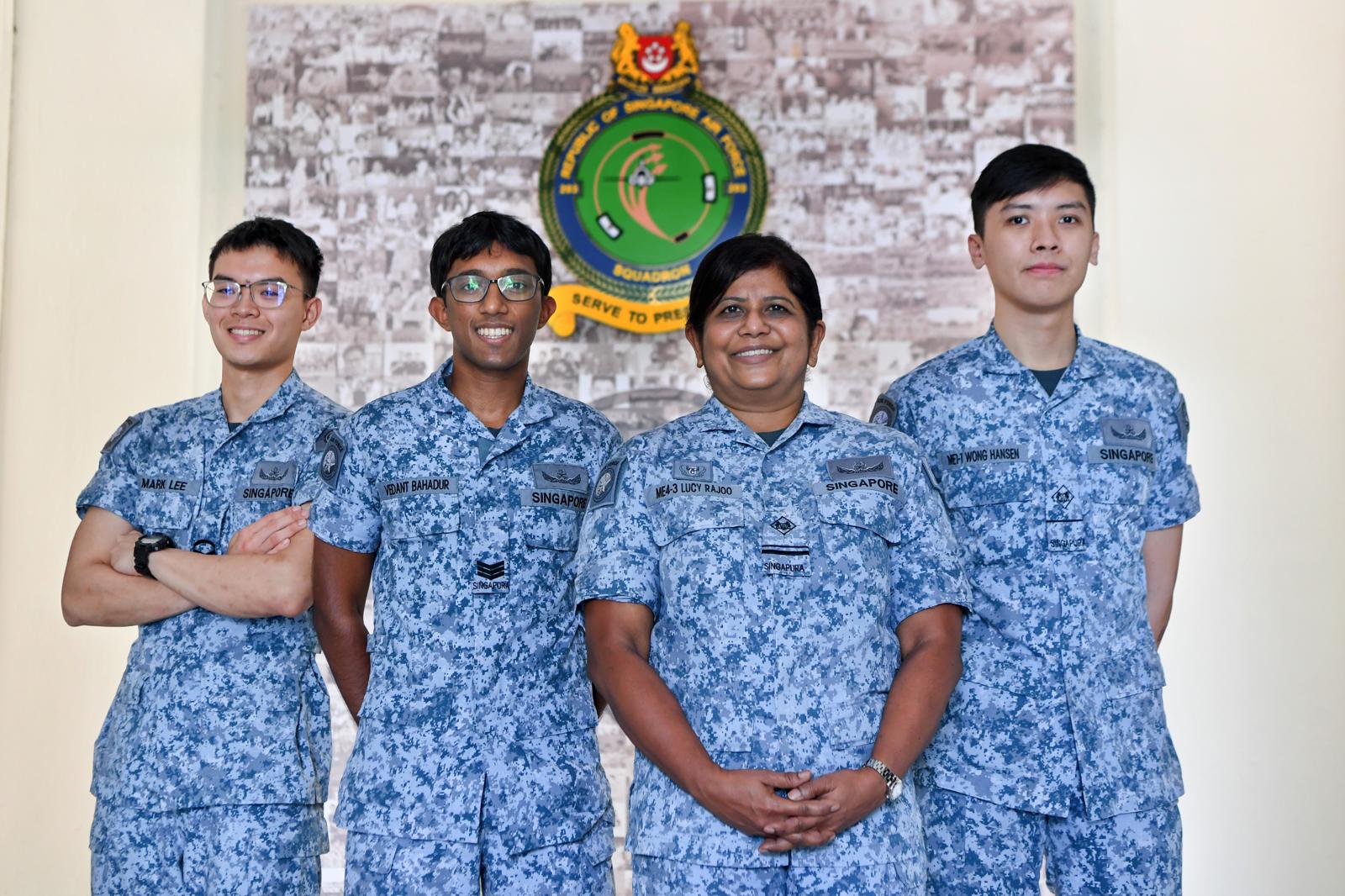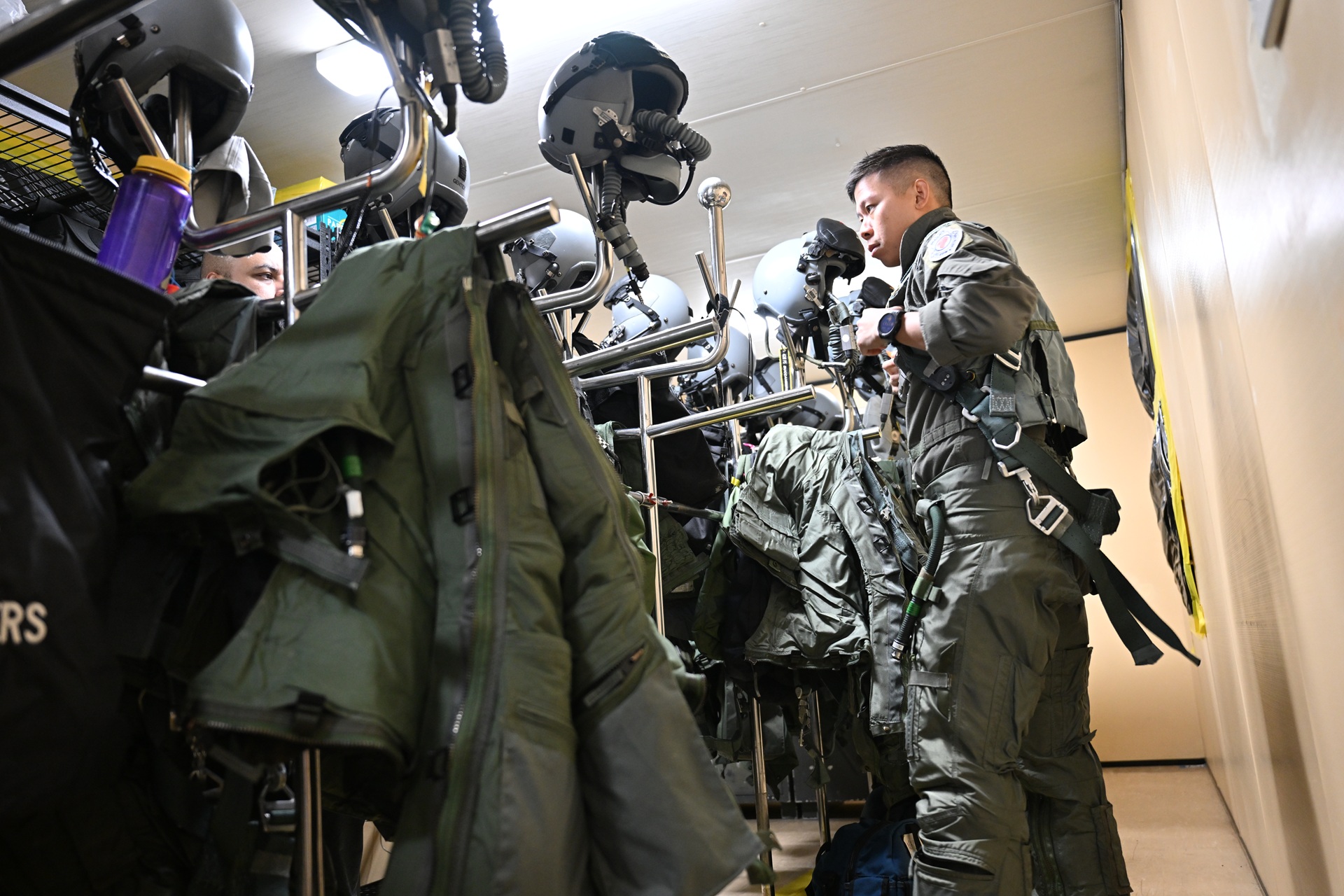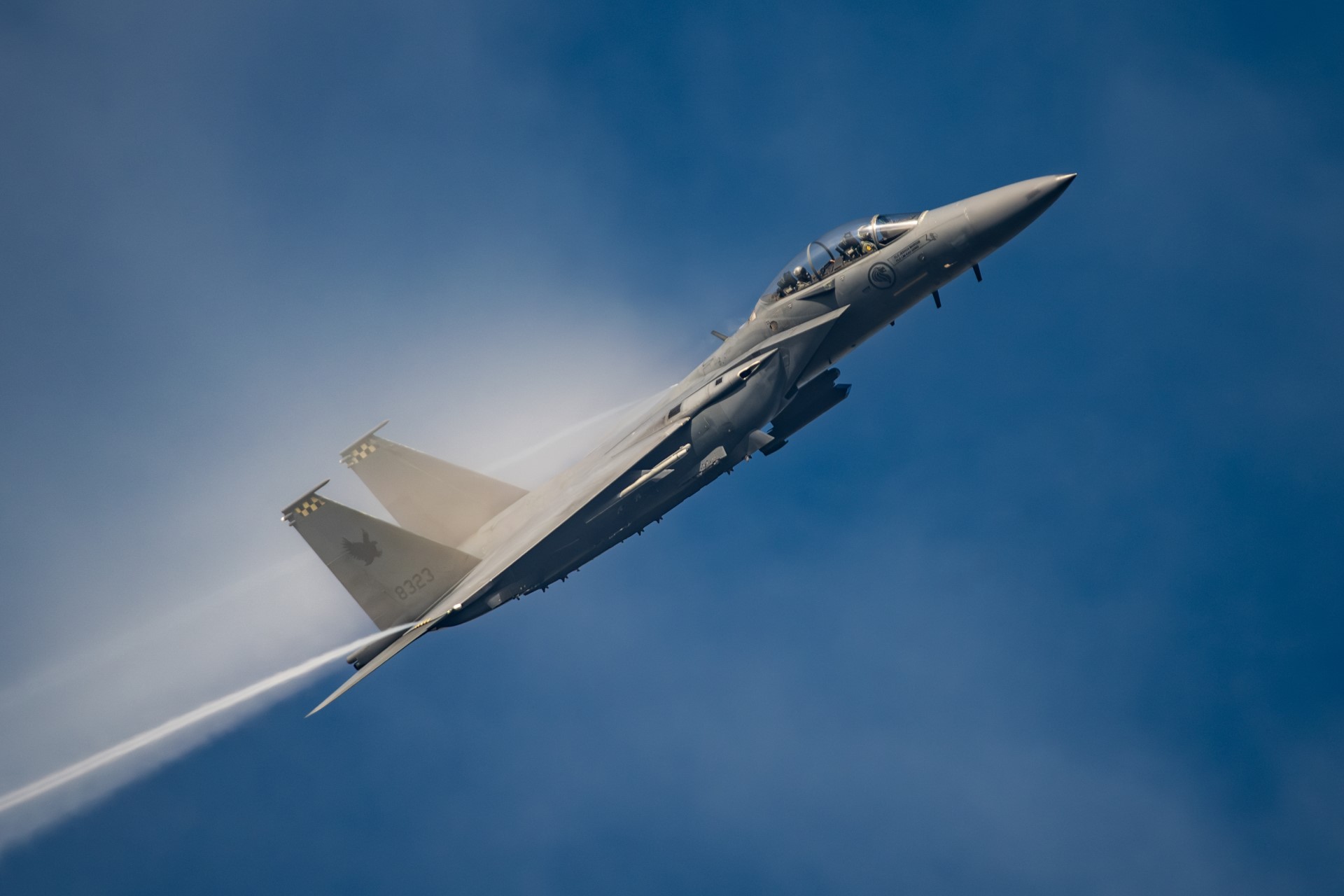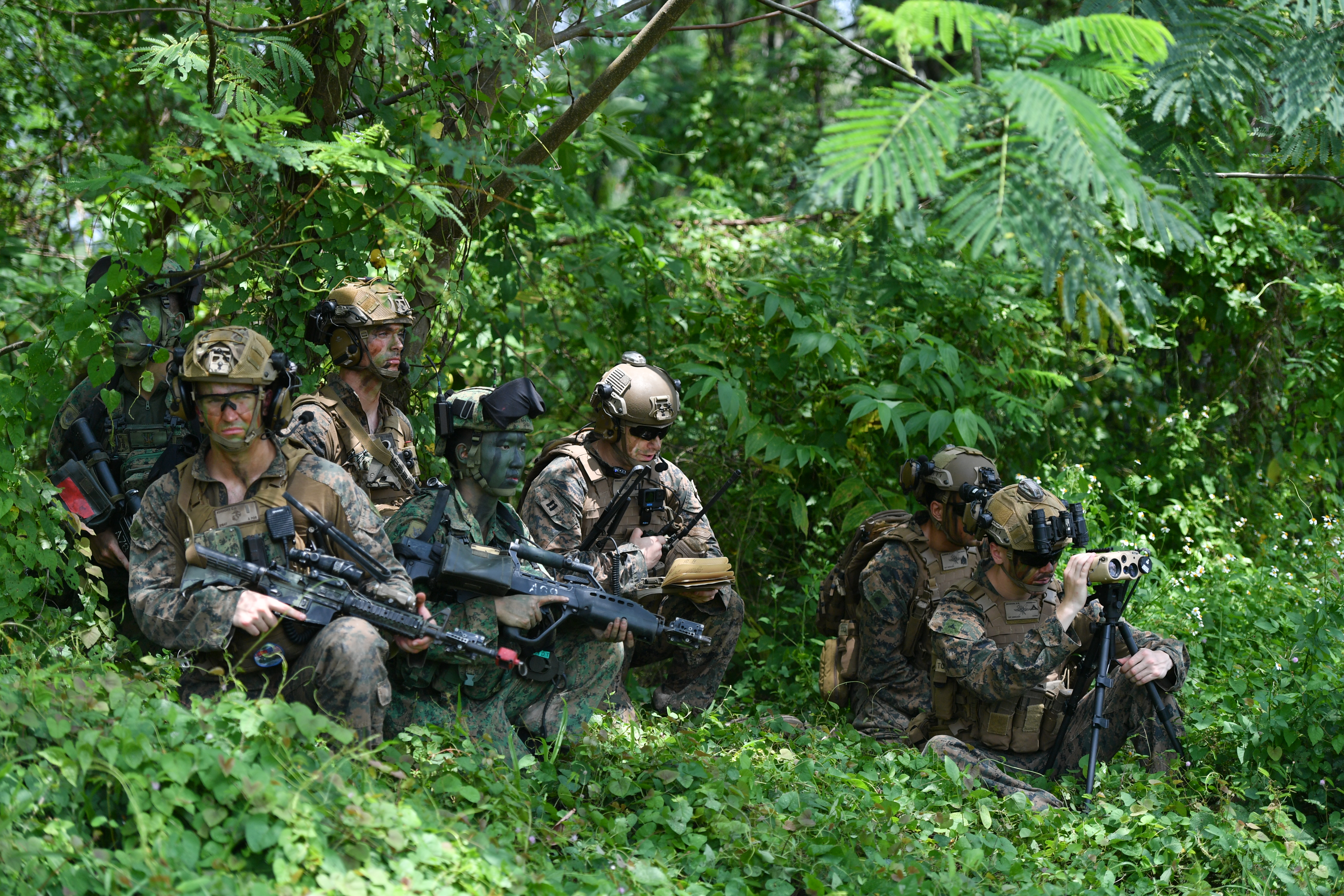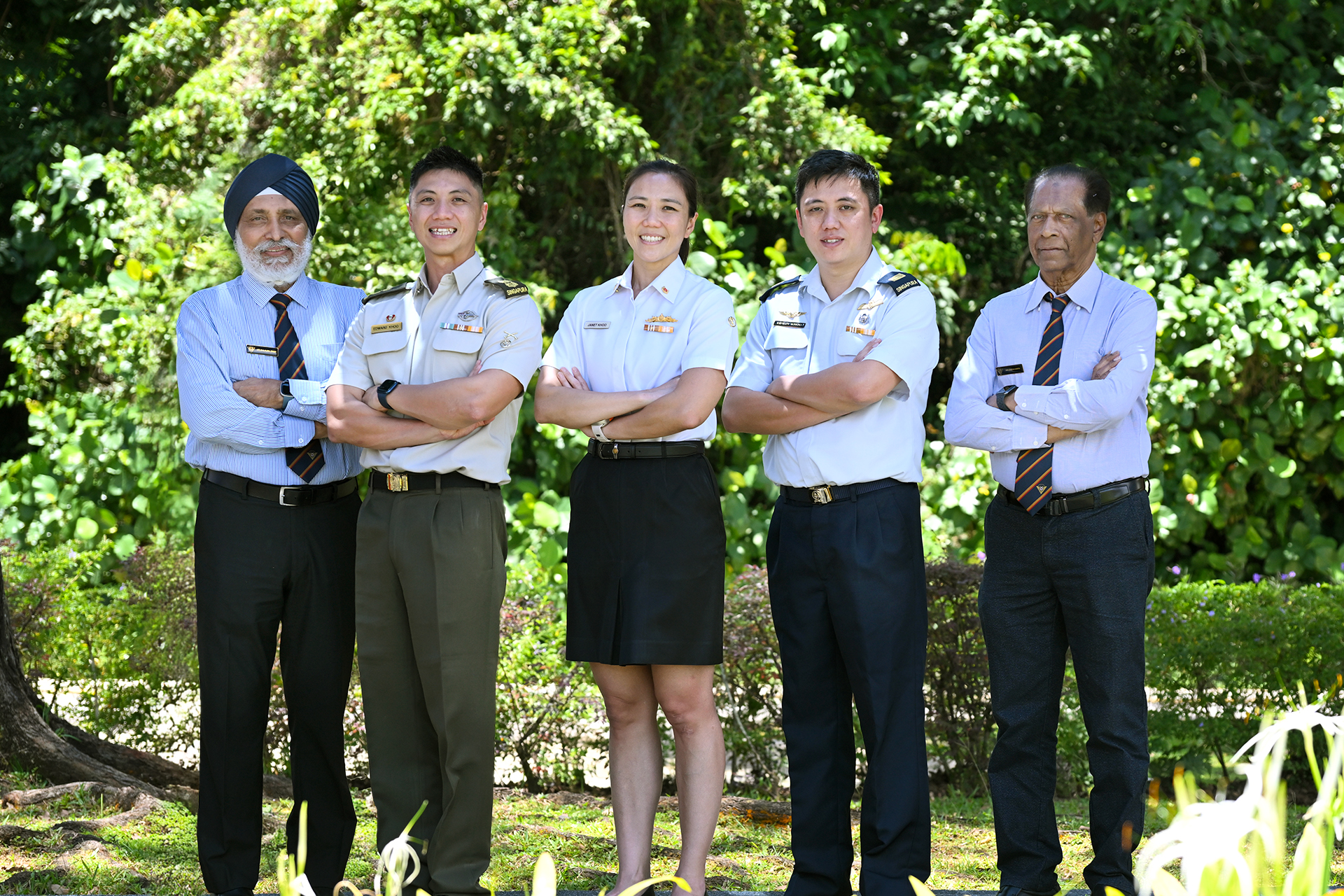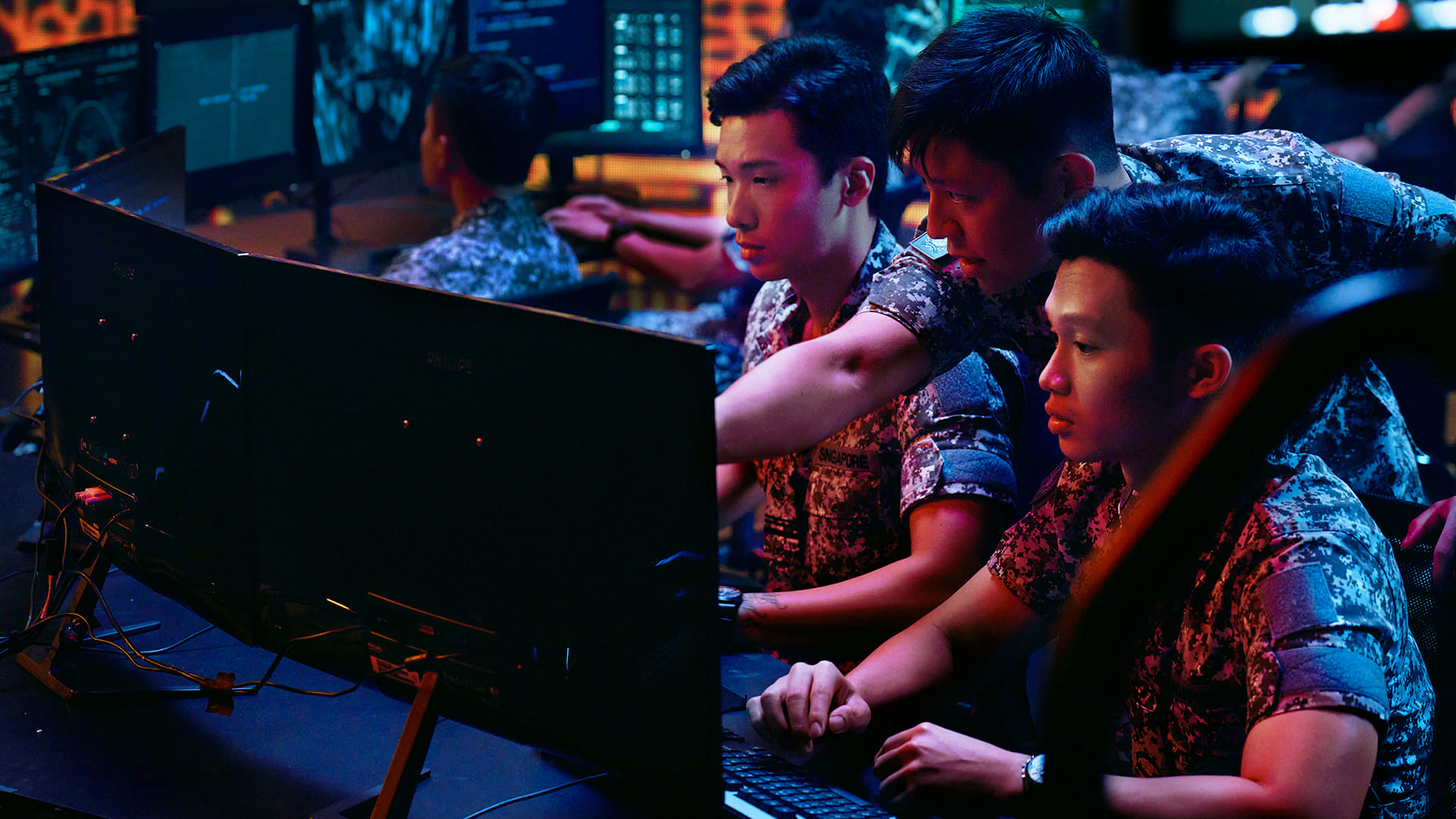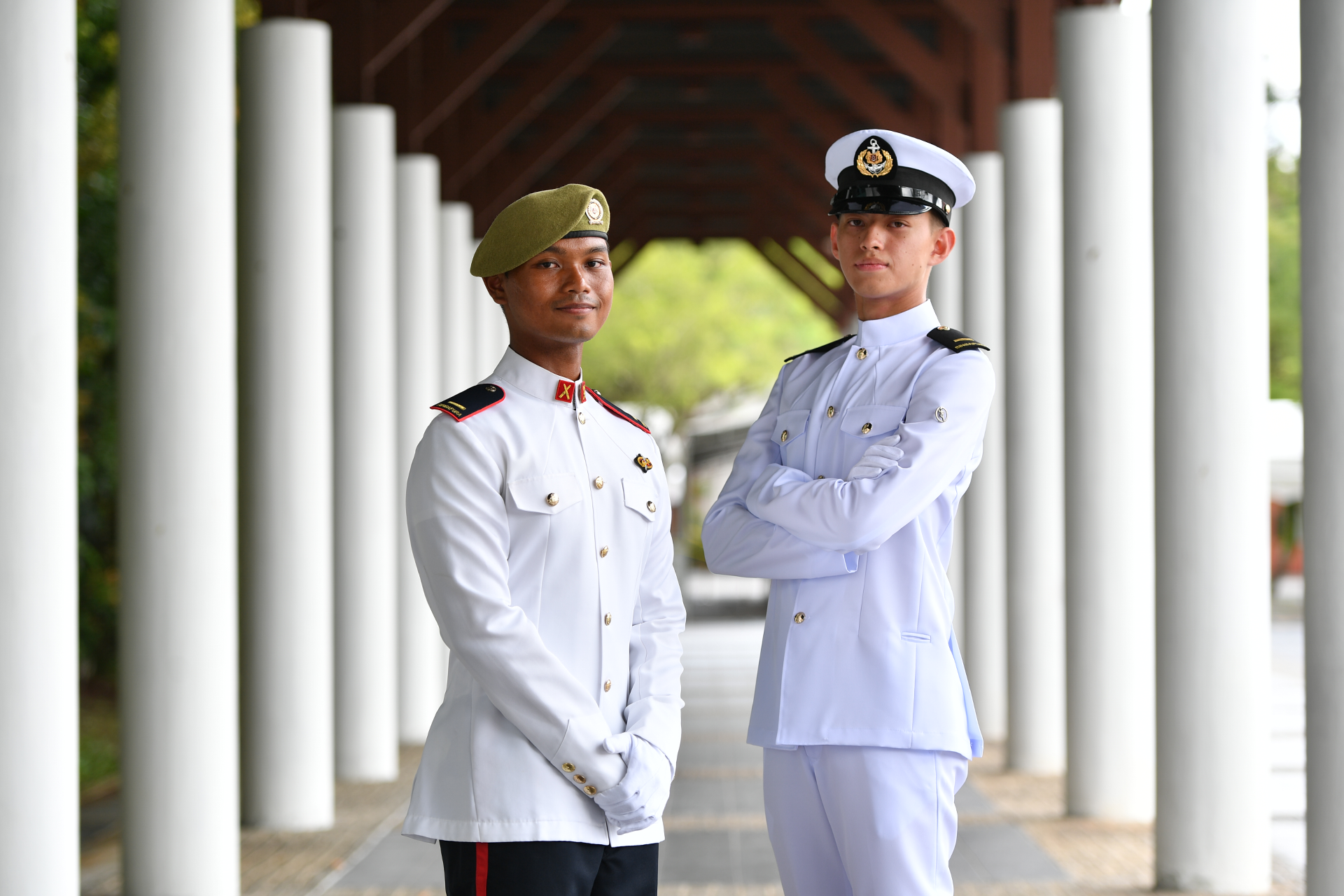TOWARDS THE NEXT GEN SAF
PHOTO // Chai Sian Liang
The world is at an inflexion, and uncertainties abound. The threat of hybrid warfare has also risen progressively. Singapore must accept that geopolitics will be turbulent and prepare for choppy waters.
While the national strategy of a strong Singapore Armed Forces (SAF) -- supported by Total Defence, maintaining good relations with our neighbours, and strong partnerships with like-minded countries -- remains relevant and essential, the SAF must continue to transform, to defend against evolving threats.
"The SAF will develop next-generational capabilities to deal with threats in both the real world and cyberspace."
This was Minister for Defence Dr Ng Eng Hen's central message in his Committee of Supply (COS) or Budget Debate speech on 3 Mar, where he updated Parliament on the Ministry of Defence (MINDEF)'s plans for developing the next generation (Next Gen) SAF.
He said: "Ultimately, it is the Next Generation SAF's primary mission and responsibility to deal with security threats in this 21st century This includes the threat of cyber-attacks and fake news."
New cyber command to fight cyberattacks
The threat of a hybrid warfare is exacerbated by the fact that some countries consider it legitimate, said Dr Ng. Citing examples such as Russia's "information troops" and cyber battalions and divisions in some countries' militaries and ministries, he highlighted the need for Singapore to strengthen defence on the digital front.
Said Dr Ng: "The Next Generation SAF needs to prepare for this environment where state-orchestrated cyber and information campaigns against another state are not only considered legitimate, but can be on-going all the time. The impact of that threat can have real and damaging physical consequences."
On 28 Feb, MINDEF disclosed that its I-net system, which allows its servicemen and employees to surf the Internet, had been breached earlier that month. About 850 servicemen's and employees' basic personal data, comprising NRIC numbers, telephone numbers and dates of birth, was stolen.
The attack appeared to be targeted and carefully planned, with the aim of gaining access to official secrets. But this was prevented by the physical separation of I-net from MINDEF's internal systems.
To strengthen and build on existing efforts on the digital front, the SAF will establish the Defence Cyber Organisation (DCO). It will be headed by Mr David Koh, who is MINDEF's Deputy Secretary (Technology) and Chief Executive of the Cyber Security Agency (CSA).
DCO will comprise four formations across MINDEF and the SAF: the Cyber Security Division, Policy and Plans Directorate, Cyber Security Inspectorate, and Cyber Defence Group (CDG).
Of the four divisions, the CDG is responsible for the 24/7 cyber defence of the SAF's military networks. Its two operational units will conduct round-the-clock monitoring of the SAF's networks and coordinate cyber defence responses. Its Cyber Defence Test and Evaluation Centre (CyTEC) provides facilities for network security testing and cyber defence tool evaluation, as well as training and exercises.
To meet the growing operational requirement for servicemen skilled in cyber technology, the SAF has created new cyber defence vocations for National Servicemen. DCO aims to recruit up to 2,600 cyber defenders over the next 10 years.
Selected soldiers will be deployed in the new cyber defence vocations from August. Following a six-month training programme, where they will learn about the SAF's networks and systems, and how to utilise the cyber defence tools, these servicemen will become Security Ops Centre Operators. They will work with analysts to devise response plans for various types of cyber attacks.
Servicemen deployed to the vocation can also expect constant courses to keep abreast of the latest in cyber attacks.
"Cyber attack methods are always evolving. Every single year there are new methods coming into play," said Lieutenant Colonel Mok Chuan Hao, Head of Operations Control in the Cyber Defence Operations Hub (CDOH). "That's why it's very important that we continue to send our people for upgrading. Even NSmen (Operationally Ready National Servicemen) who come back have to undergo training to make sure they are able to spot these new attacks and defend against them."
SAFTI City -- the next training frontier
Even as the SAF is stepping up its defence efforts in cyberspace, it continues to train to fight against traditional threats and terrorism, said Dr Ng.
To provide more realistic and effective training locally for the Next Gen SAF, the SAF will be building a new SAFTI City on existing training area in western Singapore. The new training facility, about the size of Bishan, will contain 200 buildings in two sectors.
Sector 1, modelled after an industrial area, will prepare soldiers for island defence operations in places such as Jurong Island. It will house a petrochemical complex, warehouses, container parks and other industrial buildings.
Sector 2 will train soldiers for Homeland Security and High Intensity Urban Operations. The commercial-residential environment will contain high-rise and interconnected buildings, basement carparks, a bus interchange and an underground MRT station. In addition, urban rubble will prepare them for disaster relief operations.
"The signature change, because we are using technology, will be state-of-the-art training simulation technologies designed into operating environments," said Dr Ng.
SAFTI City will take a decade to complete and cost approximately $900 million.
Three new Instrumented Battle Circuits (iBAC) will also be built in the areas surrounding SAFTI City. These will be located at the existing Pasir Laba Training Area, Ama Keng Training Area and Murai Urban Training Facility.
The drill-based circuits will allow soldiers to undergo realistic training and engage in realistic battles through interactive targets and battlefield effects. Soldiers can receive timely and objective feedback through real-time tracking and video cameras.
The iBAC can also be configured for both peace-time contingencies and conventional military operations.
Dr Ng said: "SAFTI City will take our NS training to a much higher level of realism and effectiveness."
High-tech warfighting
Noting the important role that technology will play in modern warfighting, Dr Ng highlighted that defence technology organisations will be evolving to support this front. He said: "Modern militaries are powered by technology Our defence technology organisations will gear up to support changes for the Next Gen SAF."
To nurture more leaders and commanders in defence science and engineering, the SAF will be increasing the number of scholarships and awards from 120 to 170 by 2025 -- a 40 percent increase. The Public Service Commission Scholarship (Engineering) will see its first recipients from this year.
The Defence Science and Technology Agency (DSTA) and DSO Laboratories (DSO) will be restructured to support experimentation and innovation in the SAF.
Two new laboratories will also be set up: a robotics laboratory in DSO, and an analytics and artificial intelligence laboratory in DSTA which will study the use of large volumes of real-time information that can be derived from the Internet of things and platforms.
Soldiers from 6th Battalion, Singapore Infantry Regiment (6 SIR) are already experimenting with robotics and unmanned technology. The trial Next Gen Infantry Battalion is using unmanned aerial and ground vehicles to perform missions. The Republic of Singapore Navy (RSN) is deploying its Unmanned Surface Vehicles which can navigate and avoid collisions autonomously. Additionally, the SAF is working with the Ministry of Home Affairs to develop countermeasures to potential drone attacks.
DSTA will also host the inaugural Singapore Defence Technology Summit in 2018, together with national universities and A*Star, and government agencies such as the Government Technology Agency of Singapore, CSA, National Research Foundation and Economic Development Board.
Said Dr Ng: "This summit will provide a global platform to invite luminaries, leading figures to come share their views, to give us a window into the future. Not only that, it will allow us opportunities to network and increase our access to new ideas and innovation."
Prudent use of resources
While the building of the Next Gen SAF will require significant and sustained resources over the medium term, Dr Ng pointed out that the SAF was aware of budgetary pressures, and would re-prioritise its programmes, and continue to stretch its defence dollar to the fullest and cut costs wherever possible.
For instance, the Republic of Singapore Navy's new frigate's Ship Management System was able to save $40 million and reduce maintenance time by 93 percent. Dr Ng said: "These measures, big and small, reflect a culture of prudence, using innovation to cut costs without the loss of effectiveness for the SAF"
Nurturing Next Gen NSmen
To prepare National Servicemen for the Next Gen SAF, National Service (NS) will see several enhancements.
Second Minister for Defence Ong Ye Kung said at the COS Debate that the "Next Generation SAF (is) one where we have to maximise the talent, expertise and contribution of every single serviceman."
A new initiative, "Soldier Strong", was introduced last year to strengthen soldiers in body, mind and commitment to defence. As part of the initiative, a new Centre for Excellence for Soldier Performance (CESP) has been set up and will be operational by end-2017.
At the CESP, National Servicemen can access enhanced fitness training programmes, which focus on fitness, soldier nutrition, pre-habilitation to prevent injuries and rehabilitation for injury recovery. The fitness programme will integrate training packages on resilience to enhance the mental strength of soldiers.
To encourage greater ownership of NS among full-time National Servicemen (NSFs), a new initiative was rolled out last November to allow pre-enlistees to indicate their interest in NS vocations.
In addition, the new cyber defence vocation will tap the talents of national servicemen skilled in cyber and digital technology.
Said Mr Ong: "The impact is not just on the few selected for the vocation, but will heighten the interest and expertise in cyber and digital technology across the student masses. This will also increase the talent pool for national defence as well as Singapore's growing cyber industry."
For pre-enlistees and new NSFs who are interested in joining the new cyber defence vocation, Corporal Sim Tian Quan, a Cyber Security Ops Centre Operator in CDOH, has some words of encouragement: "Fear not, because this vocation definitely does not lose out in terms of warfare operations. And as we are evolving into a more sophisticated technological area, we need this as part of our defence as well."
Evolving Total Defence practices
While the avenues for information attack are new, the threats remain the same -- to spread distortions and falsehood. Senior Minister of State for Defence Dr Mohamad Maliki bin Osman highlighted this in his speech at the COS Debate.
"To deal with our new challenges, the way we practise Total Defence has to evolve.
The government will therefore make a shift from concept to action', and help Singaporeans understand how they can put Total Defence into action in their everyday lives," said Dr Maliki.
Singaporeans will be reminded that they are the first line of defence in areas such as stopping the spread of fake news and guarding against phishing and hacking attempts online.
Dr Maliki also highlighted that MINDEF would continue to reach out and engage Singaporeans in Total Defence efforts. This would be done through "partnerships across the public, private and people sectors".
These include cross-government collaborations engagements with economic and community leaders through the Advisory Council on Community Relations in Defence and encouraging individuals to initiate their own Total Defence efforts.
